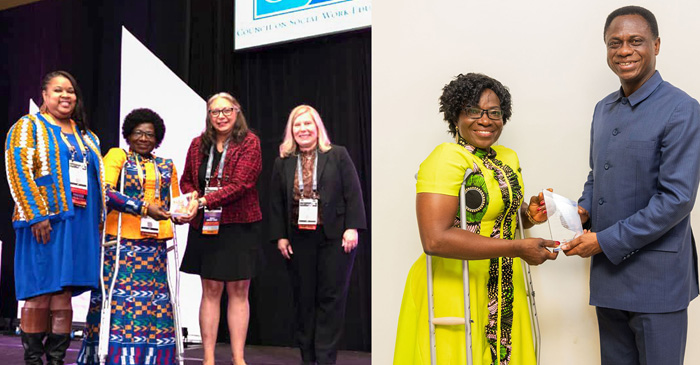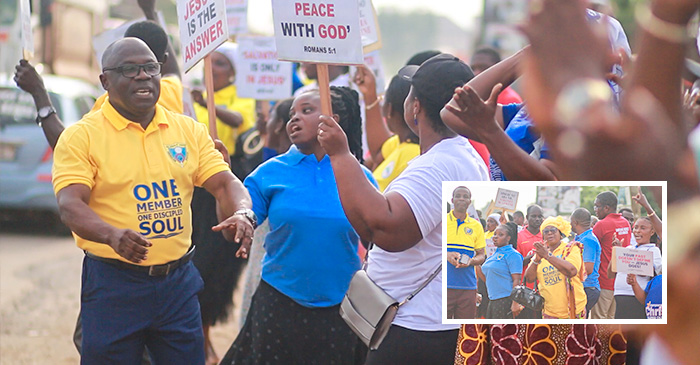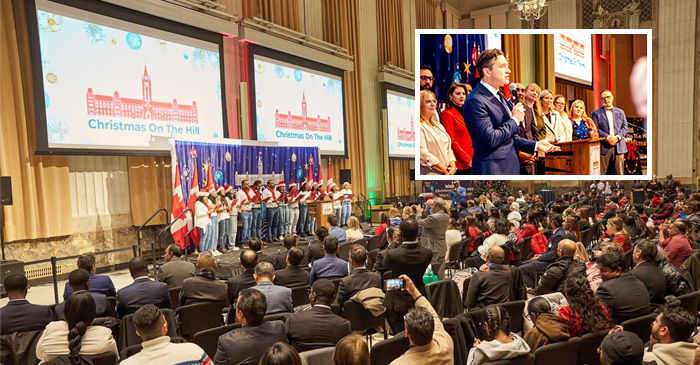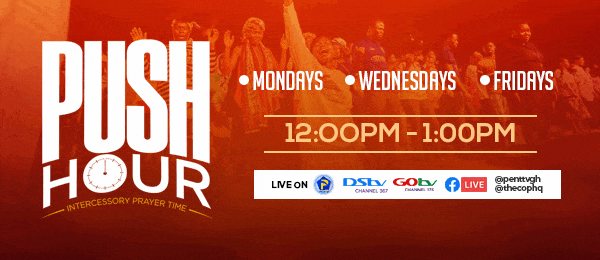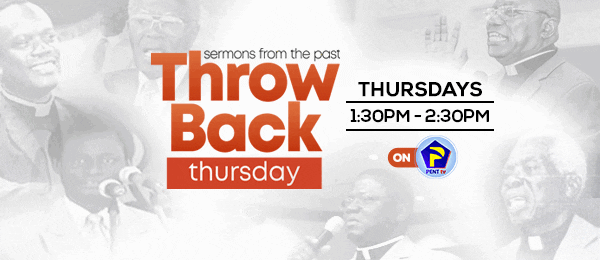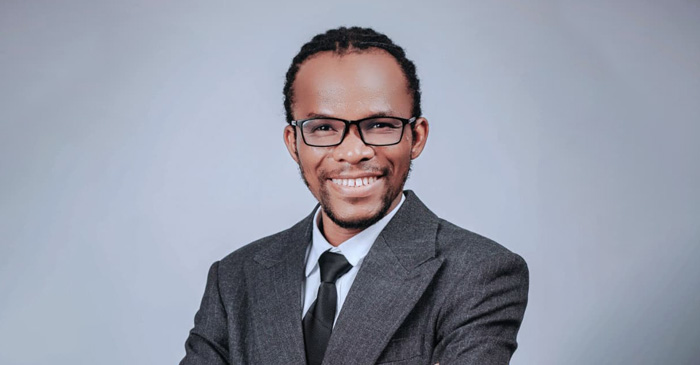
INTRODUCTION & BACKGROUND
The twenty-first century has ushered in a weighty transformation in how the Church gathers, communicates, and fulfills the Great Commission. Nowhere is this more evident than in the rapid integration of technology into ministry life. In the aftermath of the COVID-19 pandemic is the digital forms of worship and discipleship. The “new normal” for many congregations is marked by livestreams, online communities, and a digital reach that extends well beyond the walls of any physical church.
This shift, what we might term Technology-Mediated Ministry (TMM), Digital ministry (DM) or simply Media Ministry, represents both continuity with the Church’s historic embrace of innovation (from Apostle Paul’s letters carried on Roman roads to Luther’s use of the printing press) and a departure into uncharted territory. The church has always leveraged the prevailing technology of the day for ministry effectiveness. Thus, with the birthing of media ministry as an extension of traditional church ministries, especially within diaspora communities such as those in Asian jurisdictions or in enclaves where physical gatherings are hindered by constraints in securing worship venues or where diverse congregational needs mean members are often consumed with work or studies and thus distanced from in-person fellowship, the online church (or e-church/virtual church) emerges as the most reliable and effective platform for spiritual engagement. In this new paradigm, believers can participate in worship, teaching, and fellowship in real time from anywhere on the globe. The church is no longer merely a building down the street, it is now just a ‘click away’, accessible across screens and devices, seamlessly dissolving traditional boundaries of proximity and presence. This accommodates those separated by geography or circumstance, and enables others who wish to maintain connection with their ‘parent’ church after relocating overseas to remain actively involved in the life of their faith community.
‘MINISTERS OF THE DIGITAL MINISTRY’: MINISTERS CALLED TO THEIR VOCATION
This superficial engagement is further complicated by the fact that digital ministry is often shaped by the unique vision, priorities, and sometimes the theological perspectives of leadership, whether it be the head pastor, presiding elder, or broader church leadership team. As a result, we may find ourselves speaking different ‘languages’, having divergent approaches and priorities, which by large is influenced by generational differences, regional contexts, doctrinal convictions, and sometimes levels of academic exposures. These variables determine the direction of Technology-Mediated Ministry and contribute to a fragmented understanding of what goes behind the scenes, and what constitutes achieving strong online participation and membership within the virtual church context.
This is the crux: effective communication is much easier when church leaders are knowledgeable about digital tools, capable of understanding how inputs translate into outputs. However, the reality is that not all church leaders are tech experts or enthusiasts. In here at the diaspora church settings, especially those aiming to drive Technology-Mediated Ministry, we often lack stationed forefront missionaries/pastors, ministers, or leaders who directly manage the media ministry. To meet the high expectations for quality media, seamless technical production, and a strong online presence particularly in technologically advanced mission field like China and other Asian regions, the church must rely heavily on members with tech expertise as core contributors to the media ministry.
Otherwise, the church faces the costly alternative of hiring commercial media professionals or tech companies for every service. While this might yield flawless HD livestreaming and virtual services, the financial burden would be immense. For instance, if every local assembly of the COP China engaged tech firms for each Sunday service and major national programs, the sustainability of Technology-Mediated Ministry would be in serious jeopardy.
It is reasonable then to conclude that church members serving in the media ministry in mission settings are, in their own way, ministers called to their vocation, ‘ministers of the digital ministry.’ This term, of course, does not imply ordination as understood in the Church of Pentecost ministerial context but recognizes the significant role these members play. In fact, much of the impactful diaspora ministry and missions work is propelled by those at the forefront of the media ministry. Their faithful service embodies what Apostle Peter noted in 1 Peter 4:10: “As each has received a gift, use it to serve one another, as good stewards of God’s varied grace.” Their tech skills are not incidental; they are God-given gifts employed in fulfilling their service.
And just as pastors invest days and hours preparing sermons and pursue academic growth, so too do media ministry members commit to ongoing learning as technology continuously evolves. They invest time and personal resources to master new systems and paid media software, enhancing the church’s production quality. This commitment reflects a growth mindset that enriches all facets of life.
Every Sunday, media ministry members sacrifice sleep, family/personal time, and often their own fellowship experience to ensure that others can connect with God via virtual service. Frequently, they even contribute financially, purchasing equipment when church budgets fall short. These offerings may go unmentioned in church financial reports, but they are no less valuable.
Significantly, while church leadership easily identifies spiritual sons and daughters or calls members into ‘officership’, it is less visible when media ministry leaders train novices or patiently resolve technical challenges. Their dedication creates a nurturing environment where others can learn and grow. By investing in new members, they exponentially multiply the ministry’s impact. Today’s novice could be tomorrow’s media director of the Church at headquarters. This Christlike mentoring turns the tech booth into a spiritual training ground where grace prevails even under pressure.
Though they may not preach or lead congregational singing, every camera shot, audio mix, or slide transition is a spiritual act of worship and translate to making “joyful noise” unto the Lord. Their behind-the-scenes service sets a profound example that extends well beyond church walls. Crucially, the digital ministry plays a vital role in fulfilling the Great Commission through technology. As commanded in Mark 16:15 “Go into all the world and proclaim the gospel to the whole creation”, livestreams, sermon recordings, and social media extend the church’s reach far beyond physical walls.
Yet when in the case of outsourcing, when and where necessary, while we readily support financially the service of external professional tech experts, the expertise of media ministry members which is cultivated over years of personal investment and training is often overlooked or undervalued by church leadership. This neglect to some extends borders on spiritual and emotional exploitation.
HOW FAR IS TOO FAR TO SUPPORT THE MEDIA MINISTRY?
It’s worth asking the question: how far is too far to support the media ministry? Let me shed light on this: The balance is tipped “too far” when church leaders, intentionally or unintentionally, minimize or attempt to substitute the unique value that media ministry members bring to both church activities and broader mission efforts. It is also “too far” when the immense behind-the-scenes work is left unappreciated, or when feedback focuses solely on technical glitches rather than celebrating the ministry’s overall impact. Constant criticism, or a one-sided focus on technical glitches, can inadvertently shift the media team’s attention on what went wrong rather than appreciating God for what’s going right.
Furthermore, it is “too far” when high expectations for media quality are not matched by adequate resourcing. In technologically advanced countries like China, the assumption may be that excellent media production is guaranteed because of the availability of quality equipment on the market, however, this is not assured without intentional investment by church leadership. The intentionality and priority placed on equipping the media ministry are crucial for sustainable, high-quality output.
The threshold is also crossed when media ministry members are routinely expected to bear hidden, unacknowledged burdens: arriving early for setup, staying late for teardown, funding equipment transport or data costs, and sacrificing personal time, all without corresponding support or recognition. Over time, this leads to a sense of invisibility and fatigue, undermining both the individual and the ministry as a whole. It is equally “too far” when the contributions of media ministry members are reduced to mere transactional value where their importance is recognized only in moments of technical need, but their well-being, spiritual growth, and personal concerns are neglected once the service concludes. This transactional culture, if left unchecked, undermines the relational foundation of ministry and weakens the church’s ability to serve effectively in the contemporary, technologically sophisticated context.
It is important to recognize that the balance is tipped “too far” when genuine concerns from the media ministry are hastily labeled as excessive demands, or worse, misinterpreted as attempts to “milk the church” financially, without first seeking real solutions. The reality is that the operational and financial demands of media ministry are complex and often inexhaustive, making prudent budgeting and resource allocation a continual challenge. These conversations become even more nuanced when church leaders are not fluent in the technical language or fully aware of the implications of outdated or insufficient equipment. When persistent concerns are dismissed or met with inadequate alternatives, members of the media ministry are left to work with substandard tools inevitably resulting in outputs that fall short of the church’s expectations for quality.
This disconnect between expectations and resources not only places unfair pressure on media ministry members but also sets the stage for burnout and disengagement. If the response to well-founded requests is a simple “no,” without a legitimate alternative or pathway to improvement, it forces the media team to “make do” with what is available even when it is clear that such limitations will compromise the quality and effectiveness of the church’s digital outreach. In some cases, to avoid burnout from continually working with outdated or inefficient equipment, media ministry members may feel compelled to temporarily withdraw their services until their concerns are properly addressed. This act of withdrawal is sometimes mischaracterized by church leadership as disobedience or sabotage, rather than as an earnest appeal for the tools necessary to fulfill their calling.
Moreover, when requests for adequate resourcing or technical improvements are consistently viewed with suspicion or as rebellious acts, a dangerous dynamic is created. Members may silence themselves out of fear of being labeled “unspiritual” or “complaining,” and over time, many cease active participation when persistent issues go unresolved. This creates a vicious cycle: silent disengagement, restricted personal investment, and a steady decline in media quality, all of which can significantly impair the church’s ability to reach both its local congregation and the broader digital audience.
When these patterns persist without meaningful resolution, they lead to a specific form of spiritual and emotional disenfranchisement commonly referred to as “church hurt.” Here, practical needs are repeatedly overlooked, and genuine professional demands for quality and resources are mischaracterized as self-serving or excessive. The result is often quiet withdrawal by those most skilled and dedicated, leading to diminished media output and a subsequent reduction in the church’s capacity to fulfill the Great Commission in today’s digital world. The silence of overburdened members, declining production standards, and missed opportunities to reach new audiences become a self-perpetuating cycle of loss.
In mission fields such as China, the repercussions can be even more pronounced. The lack of proper support and appreciation for digital ministry often leads to a drain of talent; skilled professionals may migrate to churches with more robust media systems or, in some cases, disengage from church life altogether. The ripple effects are significant, disillusioned individuals may share their experiences within their networks, inadvertently deterring others and perpetuating cycles of hurt and disengagement.
Only by addressing these issues with empathy, intentionality, and proactive support can the church break this cycle, empower its media ministry, and fully realize its mission in the digital age.
THE ‘CITY CHURCH’: CONFRONTING THE “AKANIZED” CHURCH IN THE DIASPORA
There is also a silent matter that subtly waters down and shades the work of media ministry in the support of the ‘City Church’ concept here in the diaspora: ‘Akanizing the church’, to wit making the church ‘Akan/Ghanaian’. It is vital to recognize that the true mark of an international church is not merely in its leadership or origins, but in its posture and presentation. The fact that a church is headed by an African, or more specifically a Ghanaian, must not reduce it to a “Ghanaian church” or an “exported Akanised polished English church” transplanted into the diaspora. This should never be the case. An international church must be characterized by a genuinely multicultural, multiracial, and multilingual outlook reflected most powerfully through a vibrant and well-resourced media ministry. In such a context, the church’s digital presence becomes its global welcome. No one should need a megaphone to announce the church’s existence in a place like China; rather, a simple online search for “The COP China” should yield a dynamic, high-definition media presence that unmistakably communicates an international, inclusive identity.
When the media ministry is empowered and resourced to excellence, when worshippers follow lyrics on the screen in a universal or an internationally recognized language, and when the church intentionally engages resource persons who understand and speak the language of the culture they serve, the church truly reflects its calling to “possess the nations.” To present an Akan-language service thinly veiled in English and label it “international” is to miss the mark. The international church is not defined by its point of origin, but by its capacity to embrace and effectively minister to the diverse jurisdictions and cultures it inhabits. In this way, the church’s digital strategy becomes a testimony not to cultural preservation, but to kingdom expansion and authentic global engagement.
EMBRACING THE DIGITAL CHURCH AS A MISSIONAL IMPERATIVE
The trajectory of church ministry in the twenty-first century is unmistakably digital. While in-person gatherings remain irreplaceable for fostering deep, embodied community, the reality is that the majority of those whom the church seeks to reach, and even many existing members now engage more frequently through digital means. This shift is not merely a response to temporary disruptions or global crises but a reflection of how easily our lives now oscillate between online and face-to-face interactions.
For the church, this is not a loss but an extraordinary opportunity. The twenty-first century church leaders will recognize that embracing the digital church as the new default is not a retreat from tradition, but an expansion of the church’s mission field. The harvest is no longer confined to physical neighborhoods or sanctuaries, it also flourishes on screens and networks, accessible to those who might not be able to set foot in a physical church service. In this landscape, digital connections often precede, supplement, and even deepen in-person fellowship.
To be a truly effective church in this era means intentionally resourcing and appreciating the ministry of those who make digital outreach possible. As explored throughout this article, the contributions of the media ministry are not optional add-ons but essential expressions of the church’s calling. Ignoring their needs or underestimating their importance risks not only burnout and disengagement among gifted members but also forfeits the church’s ability to fulfill the Great Commission in a rapidly evolving digital world.
Missionaries, pastors, and church leaders in the mission field should embrace the new norm, at least staying informed to some basic needs and behind the scenes of the d’igital ministry’ will go a long way to help in matters related to technology mediated ministry. Church leaders equipping themselves with essential digital tools such as laptop, smartphones for connectivity, tablets for mobility, reliable internet access, secure storage solutions, and power banks for continuous operation demonstrates a leader’s personal practical commitment to excellence in digital ministry.
Embracing the digital does not diminish the significance of gathering in person. On the contrary, it amplifies the church’s reach and makes in-person connections more meaningful, as they are now complemented and reinforced by vibrant, ongoing digital engagement. Churches that resist this shift risk becoming relics, functioning like outdated malls in an age of online commerce, while those that lean into the digital calling will find their mission advanced, not threatened.
CONCLUSION
In summary, the church’s future lies in its ability to honor both the sacredness of physical presence and the boundless possibilities of digital ministry. By investing in the tools, training, and support necessary for effective digital engagement, the church does not merely adapt to changing times but seizes the greatest opportunity of our generation to reach the world with the gospel. The harvest is indeed plentiful, and today, a significant part of that field is online.
May we rise to meet this moment with faithfulness, creativity, and a renewed sense of mission.
Written by Dr. Emmanuel Mintah Bonku (Shanghai City Worship Center, COP China / emmanuel.bonku@stu.ucc.edu.gh)




